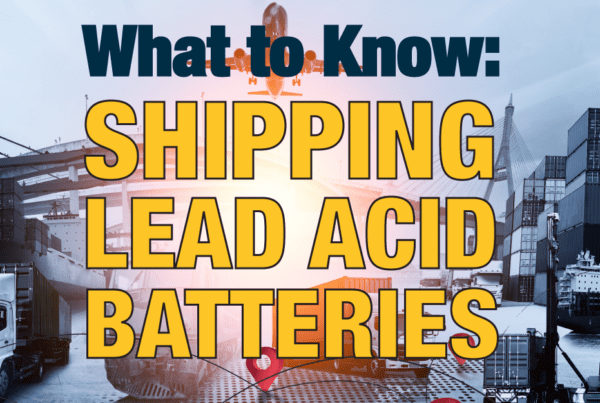
Updating the International Maritime Dangerous Goods Code (IMDG Code) may be one of the worst jobs in the dangerous goods industry. At least, if their pattern of corrigenda (lists of corrections after the initial printing) is any indication. One or two of these are to be expected during the lifespan of an edition, as typos and mistakes are noted by users and require correcting.
Why is this a common situation? Well, more than most dangerous goods regulations, the International Maritime Organization (IMO) writes the IMDG Code in a style that depends heavily on cross-referencing. This can be frustrating for someone trying to figure out how to prepare a specific shipment. For example, in Chapter 3.4, “Dangerous goods packed in limited quantities,” the Code starts off by saying that limited quantities are exempted from all requirements not in section 3.4 – except for a list of over two dozen cross-references. Each one of these must then be read through to see how they’d apply to your limited quantity shipment. This usually leads to much jaw-clenching and a desire to fling the Code against the nearest wall.
Other problems can arise from trivial mistakes or typos when transcribing from the UN Recommendations for the Transport of Dangerous Goods or other documents. Simply mistaking the word “and” for “or” in a list of requirements can completely change the intent. Not to mention the multitude of chemical names where a minor typographical error can cause needless restrictions to be put on products, or allow dangerous ones to be shipped without appropriate safety precautions.
On December 19, 2019, the International Maritime Organization, the creator and publisher of the IMDG Code, put out its latest corrigendum to the Code. Most of the corrections in this document are technical – that is, they don’t reflect changes to the intent of the Code, but rather correct typographical errors, incorrect references or other mistakes. However, these could have a significant impact on some shipments, so users of the Code should make sure that they download the document and determine if the corrections might affect their shipments.
Some of the more significant changes include:
- In section 2.4.2.3.1.2.5, the words “aromatic sulphohydrazides” should be corrected to “aromatic sulphonylhydrazides.”
- In section 2.5.3.2.4, the List of assigned organic peroxides, in the entry for 1-PHENYLETHYL HYDROPEROXIDE, UN3109, the concentration limit for Diluent Type A should be moved to the column for Diluent Type B.
- Changes have been made to sections 2.8.3.2 and 2.8.4 for determining the classification of corrosive materials.
- In section 2.9.4, the note at the end of the section regarding in-house quality management programs should be moved to subparagraph .5, since it applies specifically to that subparagraph, not the whole section.
- Packing Instruction P504 now allows 1B1 drums as well as 1B2 for combination packaging.
- Packing Instructions P909 and P910 clarify that “non-conductive” means “electrically non-conductive.”
- In section 5.2.2.1.12.1, delete the sentence “Each overpack containing radioactive material shall bear at least two labels on opposite sides of the outside of the overpack.”
- In the specimen label section 5.2.2.2.2, a deletion of the reference to 5.2.2.2.1.6.4, and an addition of “solid desensitized explosives” to the list of substances using a Division 4.1 label.
- In the section on documentation for segregation groups assigned by the shipper (5.4.1.5.11.1), it now allows you to give either the appropriate segregation group name or the segregation group code (SGG).
- In section 7.6.3.1.2, a clarification to segregation from foodstuffs by using SG codes, rather than referring back to 7.6.3.1.2.
- The segregation group list in 3.1.4 has been updated with some additions and deletions of various named chemicals in various Segregation Groups (SGG codes).
- A number of minor changes have been made in the Dangerous Goods List itself, mostly involving updating EmS codes or correcting SGG codes for specific entries.
- SP188, on exempted lithium batteries, has been made much clearer by moving the information on marking overpacks into the sub-paragraph on marking.
- In this edition, Special Provision 240 has been deleted. However, the original version left the number in the Special Provision list, and the corrigendum removes it.
- In Appendix A, the list of generic and N.O.S. shipping names, the name “ARTICLES CONTAINING A SUBSTANCE WHICH EMITS FLAMMABLE GAS IN CONTACT WITH WATER, N.O.S.” is replaced with “ARTICLES CONTAINING A SUBSTANCE WHICH IN CONTACT WITH WATER EMITS FLAMMABLE GASES, N.O.S.”. Also, UN3462, TOXINS, EXTRACTED FROM LIVING SOURCES, SOLID, N.O.S. is deleted.
That must be all of the mistakes, right? No – shortly after the list was published, I was contacted by a client regarding a cross-reference that hadn’t been updated when section numbers changed in the latest edition. (If you’re interested, check out section 5.4.1.5.11.3 and see if you can spot the error.) Unfortunately, this one hadn’t been noticed in time for the corrigendum.
So, if you’re involved in shipments by ocean, don’t forget to take this corrigendum into account when preparing your shipment. In general, these changes should help the Code to make more sense by correcting references and clarifying text, but it’s important to be using the most up to date version of the Code to ensure your shipments move hassle-free.
Do you have any questions about the IMDG Code? If you’d like more information, contact ICC Compliance Center here at 888-442-9628 (U.S.) or 888-977-4834 (Canada), and ask for one of our Regulatory Specialists.






 ICC USA
ICC USA ICC Canada
ICC Canada